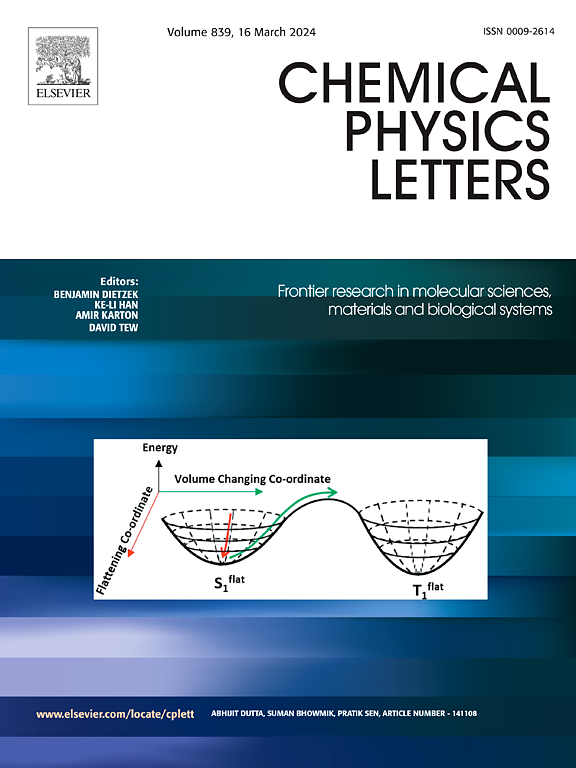Effect of annealing temperature on electronic structure and luminescence properties of Zn:SnO2 thin films
IF 2.8
3区 化学
Q3 CHEMISTRY, PHYSICAL
引用次数: 0
Abstract
Connections among the metal‑oxygen octahedra distortions, electronic structure perturbation and origin of photoluminescence (PL) in aliovalent element (Zn2+) doped SnO2 thin films have been investigated using the near edge X-ray absorption fine structure (NEXAFS) spectroscopy, PL spectroscopy, UV–visible absorption spectroscopy, and X-ray diffraction (XRD). The crystallite increases and the bandgap energy decreases with increasing the annealing temperature. Sn M5,4 edge and Zn L3,2-edge NEXAFS spectra have confirmed the Sn4+ and Zn2+ ions in thin films. O K-edge NEXAFS spectra convey Sn![]() O6 distortion. Mechanistically, different oxygen vacancies (, and ) induced PL intensification has been discussed.
O6 distortion. Mechanistically, different oxygen vacancies (, and ) induced PL intensification has been discussed.

退火温度对Zn:SnO2薄膜电子结构和发光性能的影响
利用近边x射线吸收精细结构(NEXAFS)光谱、PL光谱、紫外-可见吸收光谱和x射线衍射(XRD)等方法研究了金属氧八面体畸变、电子结构摄动和光致发光(PL)来源之间的关系。随着退火温度的升高,晶体增大,带隙能量减小。Sn M5,4边和Zn L3,2边NEXAFS光谱证实了薄膜中存在Sn4+和Zn2+离子。O k边NEXAFS光谱显示SnO6失真。讨论了不同氧空位(VO0、VO+1和VO+2)诱导PL增强的机理。
本文章由计算机程序翻译,如有差异,请以英文原文为准。
求助全文
约1分钟内获得全文
求助全文
来源期刊

Chemical Physics Letters
化学-物理:原子、分子和化学物理
CiteScore
5.70
自引率
3.60%
发文量
798
审稿时长
33 days
期刊介绍:
Chemical Physics Letters has an open access mirror journal, Chemical Physics Letters: X, sharing the same aims and scope, editorial team, submission system and rigorous peer review.
Chemical Physics Letters publishes brief reports on molecules, interfaces, condensed phases, nanomaterials and nanostructures, polymers, biomolecular systems, and energy conversion and storage.
Criteria for publication are quality, urgency and impact. Further, experimental results reported in the journal have direct relevance for theory, and theoretical developments or non-routine computations relate directly to experiment. Manuscripts must satisfy these criteria and should not be minor extensions of previous work.
 求助内容:
求助内容: 应助结果提醒方式:
应助结果提醒方式:


